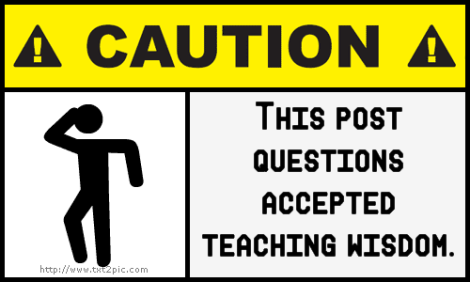
I remember being completely blown away the first time I attended a workshop on multiple intelligence theory. It seemed to be the answer to everything, and I enthusiastically set myself the task of incorporating as much of it as I could in my teaching. I never thought to question it, it just seemed the right thing. But since then I’ve had some doubts. I’ve come across certain “Multiple Intelligence activities” that I really think aren’t right for me, or for my classes. But it was colleague, co-author and friend Philip Kerr who really made me think about what I, we, are doing. I’m happy that Philip has agreed to share some of these thoughts here. I pass over to him here to tell you six things you might not know about M-I Theory.
You could be forgiven for thinking that Howard Gardner’s theory of multiple intelligences was something that the up-to-date teacher should be experimenting with. References to MI theory in English language teaching are almost uniformly positive and the topic is a more than respectable subject for plenary lectures, teacher training courses and university publishers. Even this year’s IATEFL president is a fan of MI theory. But there are a few things that you might not know …
1 However scientific it might sound, Gardner’s Multiple Intelligences Theory is not a theory in the scientific sense of the world. It is not a falsifiable theory: his ideas are not amenable to measurement or verification. The theory is sciency, but not scientific.
2 Gardner identifies eight and possibly nine different human intelligences. These intelligences are metaphorical constucts, not discrete, localizable networks or areas of the brain. They do not actually exist in any measurable way. His list does not include spiritual or olfactory intelligence, although it might be quite fun if it did.
3 Gardner has substantially more supporters in the world of education than in the world of psychology. Whilst some respected psychologists (e.g. Robert Sternberg) mention Gardner’s work, most ignore it as irrelevant to their science. His arguments have been dismissed by George Miller as ‘hunch and opinion’.
4 Gardner is horrified by some of the practical applications of his ideas that he has witnessed in classrooms. ‘I once watched a series of videos about multiple intelligences in the schools,’ he has written. ‘In one video after another I saw youngsters crawling across the floor, with the superimposed legend ‘Bodily-Kinesthetic Intelligence’. I said, ‘That is not bodily-kinesthetic intelligence, that is kids crawling across the floor. And I feel like crawling up the wall.’
5 If you find yourself in conversation with someone about MI theory, good expressions to look out for in the discussion include ‘psychometric’, ‘g’ (not the spot), ‘fMRI’, ‘outside the box’, ‘Csikszentmihalyi’, ‘emotional intelligence’, ‘Rinvolucri’ and ‘neural oscillations’. If you hear more than one of these, walk away – fast.
6 ‘Multiple Intelligences theory’, ‘neuro-linguistic programming’, ‘brain gym’, ‘shamanism’, ‘psychodrama’ and ‘life coaching’ are not related in any way. Except, perhaps, by association.
If anyone is sufficiently interested, I’ll happily provide logico-spatial-kinaesthetic references.
Philip Kerr is a teacher, teacher trainer and writer based in Brussels. He is the lead author of the course Straightforward and is never one to pull punches when it comes to questioning accepted teacher beliefs.